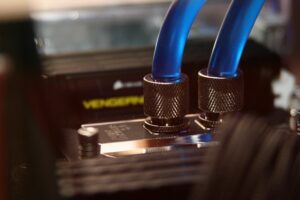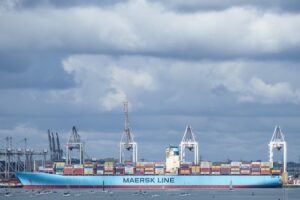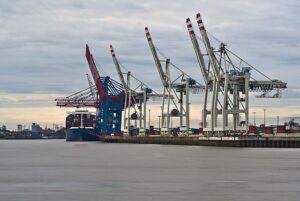Organizing 50 kW Combi Boilers: Entity Taxonomy Mapping for Efficient Fuel Management
50 kW combi boilers are high-performance, energy-efficient systems ideal for large residential prope…….

50 kW combi boilers are high-performance, energy-efficient systems ideal for large residential properties with multiple bathrooms, featuring condensing technology and ErP A ratings. Efficient management of these boilers involves entity taxonomy mapping based on fuel type (natural gas, LPG) and unique characteristics like condensing tech. Structured classification aids in quick retrieval and comparison, helping consumers choose suitable heating solutions. This process includes identifying boiler types, gathering specs, creating a taxonomy, mapping boilers, verifying against manufacturer data, and refining as models change. Entity taxonomy mapping optimizes boiler management, facilitates troubleshooting, streamlines inventory, and guides informed decisions for maximum energy efficiency and reduced environmental impact.
“Entity taxonomy mapping is transforming the way we categorize and manage 50 kW combi boilers based on fuel type. This article provides a comprehensive guide to understanding these advanced heating systems, highlighting the necessity of entity taxonomy mapping in streamlining operations. We’ll explore an effective classification system for diverse fuel types, offer a step-by-step implementation process, and discuss benefits and best practices for efficient 50 kW combi boiler management.”
- Understanding 50 kW Combi Boilers: A Brief Overview
- The Need for Entity Taxonomy Mapping
- Creating a Comprehensive Fuel Type Classification
- Implementing the Mapping Process: Step-by-Step Guide
- Benefits and Best Practices for Efficient Management
Understanding 50 kW Combi Boilers: A Brief Overview

50 kW combi boilers are high-output boilers designed to meet the heating and hot water demands of large properties with multiple bathrooms. They are a popular choice for central heating systems in residential buildings, offering both functionality and energy efficiency. These boilers are engineered to provide a consistent and efficient supply of hot water at a rapid hot water flow rate, ensuring comfort for all occupants.
With their condensing technology, 50 kW combi boilers, whether natural gas fired or LPG compatible, contribute to reduced energy consumption and lower carbon emissions. They are available with an ErP A rating, indicating excellent energy efficiency. This not only benefits the environment but also translates to cost savings for homeowners over time, making them a smart investment for those seeking reliable and sustainable heating solutions for their large properties.
The Need for Entity Taxonomy Mapping

In the context of managing and optimizing energy systems, particularly for properties with multiple bathrooms and substantial central heating demands, organizing 50 kW combi boilers by fuel type through entity taxonomy mapping is paramount. This structured approach ensures that each boiler, whether natural gas fired, LPG compatible, or employing condensing technology, is categorized based on its unique characteristics and capabilities. Such mapping facilitates efficient inventory management, simplifies maintenance routines, and enables data-driven decisions to enhance overall system performance.
By adopting this method, facilities managers can easily discern the high output boilers from their energy-efficient counterparts, ensuring that every device operates at peak efficiency. For instance, an ErP A-rated combi boiler will stand out, highlighting its superior energy efficiency and hot water flow rate. This level of organization is crucial for navigating the complexities of large property heating systems, ultimately contributing to reduced operational costs and a minimized environmental footprint.
Creating a Comprehensive Fuel Type Classification

In the context of 50 kW combi boilers, creating a comprehensive fuel type classification is paramount for effective entity taxonomy mapping. This involves meticulously categorizing each boiler based on its primary energy source, ensuring precision and uniformity. Boilers can be segmented into various types, such as those powered by natural gas or LPG, catering to diverse user needs, including large property heating with multiple bathrooms. A well-structured classification considers the unique characteristics of each fuel type, like condensing technology in high output boilers, which enhances energy efficiency and reduces environmental impact.
The mapping process benefits from this detailed classification, allowing for streamlined organization and efficient retrieval of specific boiler models. For instance, an ErP A-rated combi boiler with condensing technology can be readily identified and compared with similar models based on hot water flow rate and central heating capacity. This structured approach ensures that every 50 kW combi boiler is accurately represented, facilitating informed decisions for consumers seeking energy-efficient solutions to meet their specific heating demands.
Implementing the Mapping Process: Step-by-Step Guide

Implementing the mapping process for organizing 50 kW combi boilers by fuel type involves a systematic approach to ensure accurate categorization. Here’s a step-by-step guide:
1. Identify Boiler Types: Start by categorizing your 50 kW combi boilers based on their fuel source. You’ll likely have options like natural gas fired, LPG compatible, and potentially other alternatives. This initial sorting lays the foundation for more precise mapping.
2. Gather Data: Collect detailed specifications for each boiler model, including energy efficiency ratings (like ErP A rated), hot water flow rates, central heating capacities, and whether they incorporate condensing technology. These data points are crucial for nuanced classification.
3. Create a Taxonomy: Develop a structured taxonomy that reflects the hierarchy of fuel types and relevant technical features. For instance, under natural gas fired, you might have subcategories for different hot water flow rates or specific central heating capacities.
4. Map Each Boiler: Assign each 50 kW combi boiler to its corresponding category within the taxonomy based on the gathered data. This meticulous process ensures that every boiler is accurately placed, making it easier to manage and compare high output boilers suitable for large properties with multiple bathrooms.
5. Verify and Refine: Cross-check your mapping against manufacturer specifications and industry standards to ensure consistency. Regularly update the taxonomy as new models enter the market or existing ones undergo significant upgrades, especially in terms of energy efficiency.
Benefits and Best Practices for Efficient Management

Entity taxonomy mapping offers significant benefits for managing 50 kW combi boilers, especially in large properties with multiple bathrooms. By meticulously categorizing and organizing these high-output boilers based on fuel type, energy efficiency features, and compatibility (e.g., natural gas fired or LPG compatible), facilities managers gain a comprehensive view of their heating systems. This structured approach enables quicker troubleshooting, easier inventory management, and informed decision-making when it comes to replacing or upgrading equipment.
Best practices for efficient 50 kW combi boiler management include leveraging condensing technology to maximize energy efficiency and reduce environmental impact. Regular maintenance checks on these ErP A-rated boilers are crucial to ensure optimal performance and prolong their lifespan. Additionally, monitoring hot water flow rate and central heating capacity can help identify areas where improvements or adjustments might be needed, contributing to overall energy conservation efforts in residential or commercial settings.
Entity taxonomy mapping plays a vital role in efficiently organizing 50 kW combi boilers based on fuel type, streamlining management processes. By creating a comprehensive classification and implementing a structured mapping process, businesses can significantly enhance their inventory control, facilitate easier procurement, and promote sustainable practices. This approach ensures that each boiler is accurately categorized, enabling better decision-making and optimization in the dynamic market for 50 kW combi boilers.







